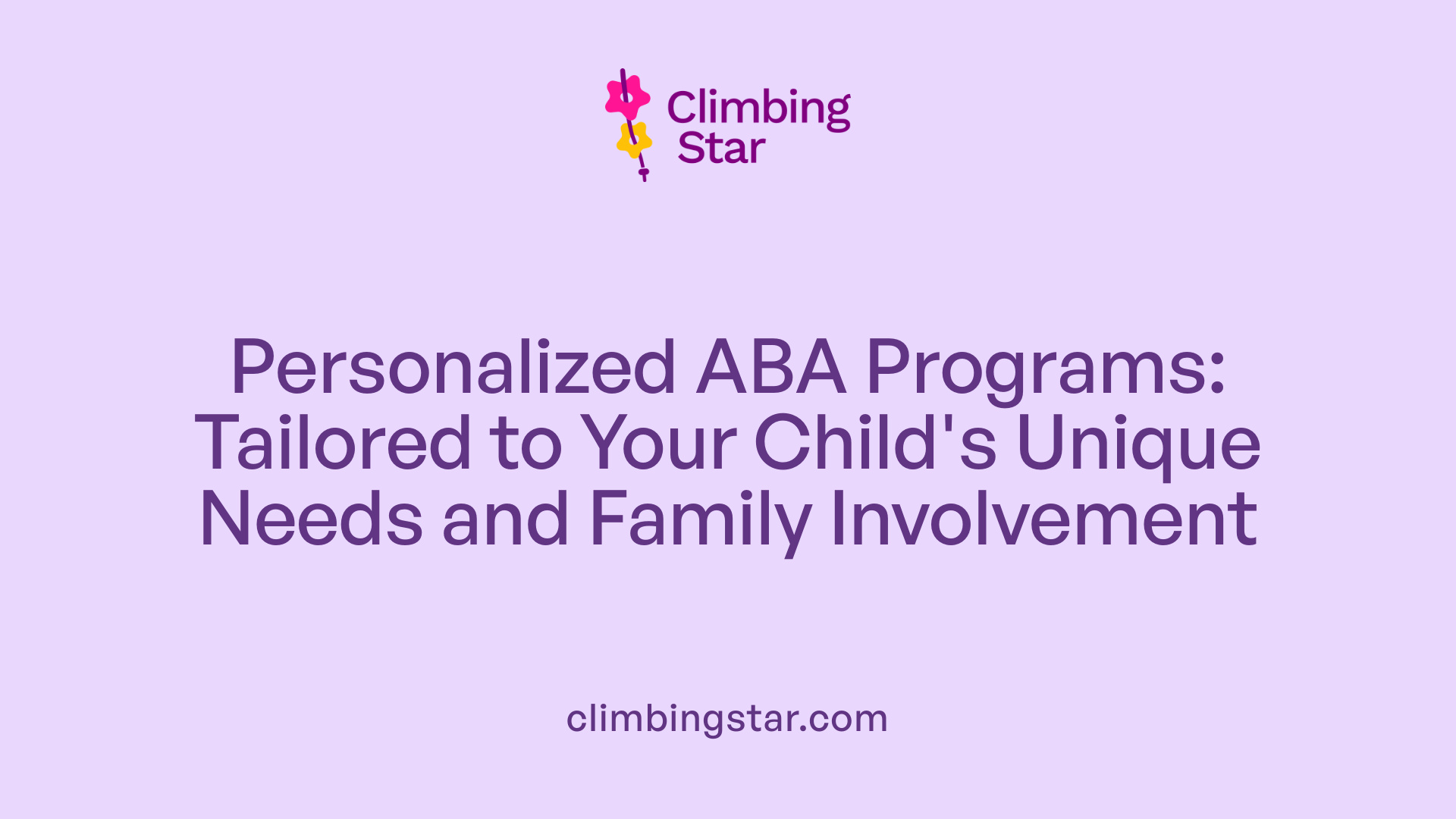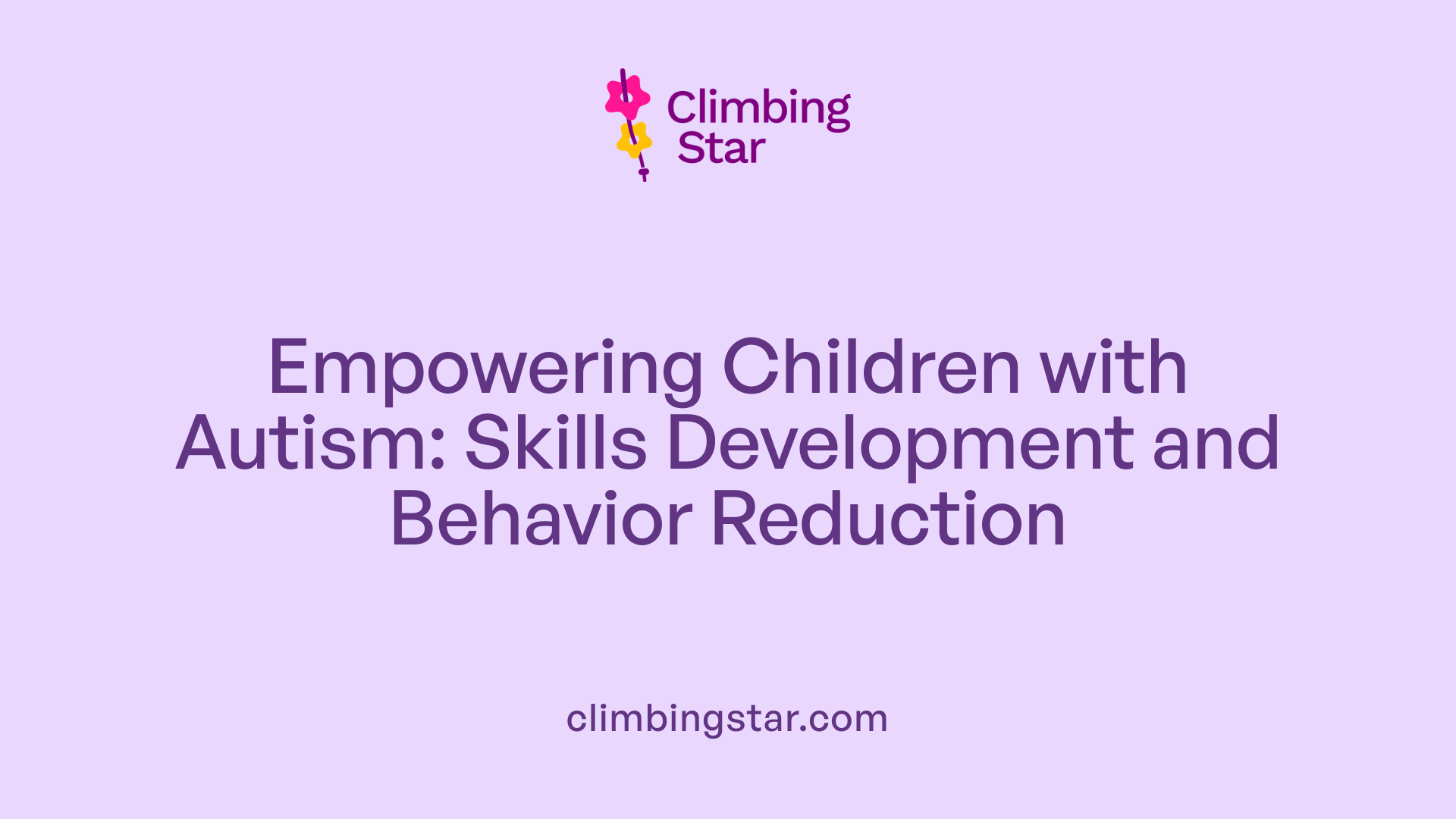Understanding ABA Therapy and Its Role in Autism Support
Applied Behavior Analysis (ABA) therapy stands as a scientifically grounded, evidence-based intervention widely recognized as the gold standard for treating autism spectrum disorder. Treetop ABA Therapy embraces these principles, providing personalized, intensive programs designed to help individuals develop vital skills and improve their quality of life. This article explores the core components of ABA, how it benefits those with autism, the professionals behind its delivery, and the techniques that shape effective outcomes.
The Essence of ABA Therapy in the Treetop Approach

What is Applied Behavior Analysis (ABA) therapy?
Applied Behavior Analysis (ABA) therapy is a scientifically grounded, evidence-based approach aimed at teaching children with autism spectrum disorder important skills while reducing behaviors that interfere with learning and social interaction. It uses principles of learning theory such as positive reinforcement, prompting, and behavior analysis to encourage desired behaviors and fade out assistance gradually, enabling children to achieve greater independence.
What scientific evidence supports ABA therapy?
ABA is widely recognized as the gold standard in autism treatment, backed by over 60 years of research from leading institutions like the National Autism Center and the U.S. Surgeon General. Studies consistently show that children receiving intensive ABA therapy—often more than 20 hours per week starting before age four—demonstrate gains in language, social skills, intellectual abilities, and daily living activities. The therapy’s methods are grounded in the science of behavior analysis, validated through peer-reviewed research and systematic reviews.
What are the primary goals of ABA therapy?
ABA therapy targets several core areas:
- Communication and language development
- Social interaction skills
- Self-care and daily living abilities
- Reduction of challenging or harmful behaviors
Therapists use structured techniques like Discrete Trial Training, Pivotal Response Treatment, and natural environment teaching to create positive, socially significant changes. Progress is regularly tracked through data collection, allowing adjustments to promote autonomy and skill generalization across environments.
How is treatment individualized in ABA?
Treatment plans are carefully designed by Board-Certified Behavior Analysts based on detailed assessments of each child's strengths, needs, and abilities. These personalized plans include clear, measurable goals, often embedded within play-based activities to engage young learners. Family involvement is an essential component, with training provided to parents and caregivers to ensure consistent reinforcement of skills beyond therapy sessions. This individualized, holistic approach helps maximize outcomes for each child.
| Aspect | Details | Significance |
|---|---|---|
| Definition | Evidence-based therapy using learning principles to teach skills and reduce behaviors | Ensures scientifically supported, effective care |
| Scientific Support | Over 60 years of research, endorsed by major organizations | Validates consistency and long-term effectiveness |
| Primary Goals | Improve communication, social skills, self-care; reduce negative behaviors | Promotes meaningful life improvements |
| Individualized Planning | Personalized goals by certified analysts; family involvement emphasized | Tailors treatment to unique needs and environments |
Benefits of Treetop ABA Therapy for Children with Autism

How does ABA therapy help individuals with autism?
ABA therapy uses scientifically backed techniques to teach new skills and enhance existing abilities in individuals with autism. It focuses on communication, social interaction, self-care, and daily living skills through positive reinforcement and prompting. The therapy is tailored by behavior analysts to fit each child's unique needs, involving family members for consistency. This systematic approach helps reduce challenging behaviors and encourages independence.
Skill development in communication and social interaction
Treetop ABA therapy prioritizes improving communication and social skills through structured, one-on-one sessions. Techniques such as Discrete Trial Training (DTT) and Pivotal Response Treatment (PRT) focus on motivation, initiation, and interaction, laying the foundation for meaningful social engagement. Natural environment teaching integrates learning into daily routines, supporting skill generalization across settings.
Reduction of challenging behaviors
The therapy incorporates methods to decrease negative behaviors like self-harm or tantrums by rewarding desirable actions and minimizing attention to undesired ones. Strategies like antecedent manipulation and reinforcement allow therapists to guide behavior effectively, fostering self-control and emotional regulation.
Evidence of effectiveness and outcomes
Research consistently identifies ABA as the gold standard in autism intervention. Intensive long-term ABA therapy has been shown to enhance language development, intellectual abilities, and daily living skills. Outcomes are closely monitored through data collection, enabling personalized treatment adjustments that ensure sustained progress.
Early intervention significance
Early Start Denver Model (ESDM), an ABA-based approach for children aged 1 to 4, highlights the importance of early intervention. Beginning therapy before age four, with high intensity, is linked to significant developmental gains and reduced long-term service needs. Involving family members in early therapy amplifies benefits by reinforcing skills in everyday environments.
The Professionals Powering Treetop ABA Therapy
Who typically provides ABA therapy services?
Applied Behavior Analysis (ABA) therapy services are delivered by a coordinated team of trained professionals. Central to this team are Board Certified Behavior Analysts (BCBAs), who design and oversee personalized intervention plans based on thorough assessments. Supporting them are Registered Behavior Technicians (RBTs) and Board Certified Assistant Behavior Analysts (BCaBAs), who implement these plans directly with the children under supervision.
How does the team-based and family-inclusive approach function?
ABA therapy is a collaborative endeavor involving not only therapists but also families. Training for parents, caregivers, and siblings is emphasized to maintain consistency and reinforce learned behaviors across different environments. This family-inclusive strategy promotes generalization of skills and maximizes intervention effectiveness.
What ethical standards and certifications govern ABA providers?
Practitioners of ABA are held to rigorous ethical standards established by the Behavior Analyst Certification Board (BACB). Certification as a BCBA, BCaBA, or RBT involves extensive education, practical experience, and adherence to a code of ethics to ensure high-quality, responsible care.
In what settings is ABA therapy delivered?
ABA therapy takes place in diverse environments tailored to the child’s needs, including homes, clinics, schools, and community settings. This flexibility helps children apply newly acquired skills in real-world contexts and facilitates natural environment teaching.
| Professional Role | Responsibilities | Contribution Detail |
|---|---|---|
| Board Certified Behavior Analyst (BCBA) | Assessment, program design, oversight | Develops individualized plans, monitors progress, adjusts goals |
| Board Certified Assistant Behavior Analyst (BCaBA) | Implements interventions under BCBA supervision | Conducts therapy sessions, collects data, supports families |
| Registered Behavior Technician (RBT) | Direct therapy delivery | Engages with children daily, applies ABA strategies consistently |
ABA therapy at Treetop is defined by professionalism, teamwork, and family involvement, ensuring comprehensive, ethical, and effective interventions for children with autism spectrum disorder.
Core Techniques Utilized in Treetop ABA Therapy
What techniques are commonly used in ABA therapy?
Applied Behavior Analysis (ABA) therapy employs a variety of techniques tailored to promote effective learning and behavioral change for children with autism spectrum disorder. One of the most common strategies is positive reinforcement, where desired behaviors are rewarded to increase their frequency. For example, a child successfully completing a task may receive praise or a small reward, reinforcing the behavior.
Positive reinforcement and prompting
Prompting is another essential technique, providing cues or assistance to encourage correct responses. Gradually, prompts are faded out to foster independent skill use. This method ensures that the child learns new skills without becoming reliant on constant guidance.
Visual modeling and behavior chaining
Visual modeling — involving videos, pictures, and charts — serves as a powerful learning tool, especially for those with communication challenges. Behavior chaining breaks complex skills into smaller, manageable steps, teaching each sequential action so children can build to complete the whole task.
Natural environment teaching and Pivotal Response Treatment
Natural Environment Teaching (NET) integrates learning into everyday situations, making skill acquisition more meaningful and generalizable. Alongside NET, Pivotal Response Treatment (PRT) focuses on pivotal behaviors like motivation and communication initiation by using play-based interactions. Both approaches support broader social and communication improvements.
Use of data for progress monitoring
Data collection and analysis play a central role in ABA therapy, allowing therapists to monitor progress and adjust treatment plans. By tracking behavioral changes, professionals can tailor interventions, phase out supports, and set new goals that encourage independence and continuous growth.
These targeted techniques form the foundation of Treetop ABA therapy, combining structure and flexibility to meet each child's unique needs and promote lasting positive outcomes.
Beyond Basics: The Holistic Impact and Future of Treetop ABA Therapy
Family involvement and training
Family participation is integral to the success of Treetop ABA therapy. Training parents, caregivers, siblings, and other professionals ensures that newly learned skills are consistently reinforced across home and community settings. This collaborative approach helps maintain treatment goals and promotes generalization of skills, creating a supportive environment that nurtures the child's development beyond clinical sessions.
Adapting ABA to individual and cultural needs
Treetop ABA therapy is tailored to each individual’s unique profile, including cultural background and personal preferences. Board-Certified Behavior Analysts (BCBAs) conduct detailed assessments to craft personalized treatment plans that respect cultural values and address specific challenges. This customization fosters more meaningful engagement, enhancing motivation and optimism in therapy outcomes.
Addressing criticisms and refining methods
While ABA is widely recognized as the gold standard for autism treatment, some critique compares it unfavorably to animal training or express concerns about initial forced behavior change. Treetop ABA acknowledges these perspectives by emphasizing compassionate, child-centered approaches that prioritize understanding and acceptance of the child’s natural behaviors. The therapy continually evolves by integrating play-based techniques and reinforcing communication, aiming to reduce distress and promote autonomy.
Sustainability and long-term benefits
Long-term research supports the sustainability of Treetop ABA therapy's positive impacts. Early intensive intervention can lead to significant developmental gains, reducing the need for extensive future services. Progress tracking and data analysis allow for ongoing adjustments, ensuring interventions remain effective over time. Families are empowered to maintain and build on gains, fostering lasting improvements in communication, social skills, and independence.
The Promise of Treetop ABA Therapy for Autism Support
Treetop ABA Therapy embodies the best practices and scientific foundations of Applied Behavior Analysis, offering individualized, evidence-based interventions that foster meaningful growth in communication, social skills, and independence for individuals with autism. Through collaboration between skilled professionals and families, the therapy harnesses various proven techniques tailored to unique needs, maximizing effectiveness. While ongoing dialogue and refinement continue to enhance its approach, the enduring success and endorsement of ABA affirm Treetop's commitment to improving quality of life. As research and practice evolve, Treetop ABA Therapy stands poised to remain a leading resource for those seeking comprehensive autism support.
References
- Behavioral Therapy for Autism Spectrum Disorder in Children
- What Is Applied Behavioral Analysis Therapy for Autism?
- Applied Behavior Analysis: What Is It and How Does It Work?
- A Treatment Summary of Applied Behavior Analysis
- ABA Therapy Examples, Definition & Techniques
- Applied Behavior Analysis (ABA)
- The Top 10 Reasons Children With Autism Deserve ABA
- Applied Behavior Analysis (ABA)







